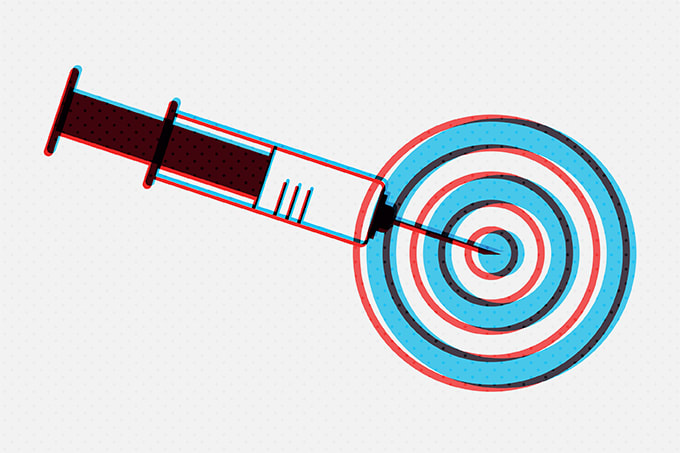AI-powered companion diagnostics use machine learning and advanced image analysis to enhance biomarker detection, optimize workflows, and improve diagnostic accuracy. For pathologists, the technology promises a powerful tool to support clinical decision-making, reduce variability, and streamline complex assessments.
Here, Douglas Clark, Chief Pathologist for Companion Diagnostics at Agilent, discusses how these enhanced companion diagnostics are shaping the future of pathology – and how their adoption will help advance patient care.
Meet Douglas Clark

I've had a long career and been fortunate to have watched digital pathology from many different angles.
I started my career at Johns Hopkins doing research and teaching alongside diagnostic pathology. From there I moved to The University of New Mexico to become Chair of the pathology department, where my interests in digital pathology and AI really took off.
One company I collaborated with had just developed an AI module for annotating areas of interest on a digital slide. My involvement was in training the foundational model to recognize the relevant features, and we published a few articles on that. That project really brought home the role of the pathologist – as opposed to the computer scientist – in developing these tools for practical use. You soon learn that “garbage in equals garbage out” – there is no magic involved.
From there, I moved to a Chief Medical Officer role at Tricore – a large reference lab. I did that just in time for the pandemic, so obviously much of my time was spent managing COVID-19 testing in the state of New Mexico. But, along with that came a drive to accelerate the deployment of digital pathology to facilitate remote sign-out of cases. I set up the infrastructure for digital pathology at Tricore, which served two different groups – the University of New Mexico's group and a private group of pathologists. That taught me that there is no one ideal model for digital pathology. Every group has different needs, and laboratory leaders need to establish each system around those needs.
Later, I moved to a pathology AI company, where I was involved in one of the first clinical trials for software as a medical device in pathology – specifically, detection of prostate cancer in needle core biopsies. It was a useful experience in terms of learning how to set up a clinical study, train the algorithm from the user perspective, and ensure non-inferiority of the tool – in other words, making sure the algorithm didn’t make us worse diagnosticians.
Finally, all that varied experience led me to join Agilent two years ago. Today, one of my main tasks is to find AI solutions to navigate the various disease scoring systems we use in pathology to help make treatment decisions. Because AI is great at quantification tasks, it can make these companion diagnostics work better for patients, as well as providing valuable tools for pathologists.
There are dozens of companies making these tools, and I am trying to identify the preferred partners to bring to the pharmaceutical industry.
Why do we need AI-powered companion diagnostics?
In oncology, one driver is the need to evolve diagnostics to meet the type of drugs we’re working with. For example, there is a dense pipeline of antibody–drug conjugates coming through, for which the mechanism of action is very complex.
If we look at HER2-positive breast cancer, the first companion diagnostics were simply looking for overexpression of HER2. But antibody–drug conjugates might have efficacy in low expressors, so we will have to examine the entire dynamic range of expression. And that adds complexity to the diagnostic tests.
Immuno-oncology drugs have an even more complex mechanism of action because the body’s immune cells are involved. Here, we need to develop the next generation of PD-L1 assays to match the complex biology of the treatments.
The second driver for introducing AI is information content. Pathology has switched from a relatively data poor specialty to an immensely data rich field practically overnight. So how do we capitalize on all this data?
There is so much information contained in a single digital whole-slide image – and digital pathology and AI can really help us unlock it.
What’s in it for the various stakeholders?
For our patients, our primary goal in all this is better prediction of response or nonresponse to treatments.
From the pharmaceutical industry perspective, it’s about gaining approval for drugs, which means running the most robust clinical trials. They want better tests.
In the clinic, we want the right drug for the right patient at the right time, which requires the most powerful diagnostic tests we can make.
Tools for better quantification of biomarker expression are the very foundation of precision medicine. Right now, biomarker testing is in a semiquantitative – and admittedly somewhat subjective – state. As I said before, quantitative tools that measure the whole dynamic range of expression offer an incredible opportunity for all stakeholders.
So that’s where AI-assisted companion diagnostics come in. There are two main classes. One is an assistive algorithm that examines digital images in the same way a pathologist does and assembles the observations into an output. The opportunities there would be faster and more accurate classification.
But, for me, the Holy Grail is what’s called an augmentative algorithm that can extract a feature from an image that a pathologist cannot see easily – or cannot see at all. It can bring more of the information content to the companion diagnostic.
Should we approach this technology with caution?
It’s important to remember that AI is not really artificial. It’s human-generated computer code. And it’s not, quite yet, intelligence either. We should approach the algorithms with the recognition that they are defined by the types of cases – and the features within them – that the pathologists put forward. They have the potential to extract a lot of useful information from images that pathologists need.
The caution comes with recognizing that such human-generated tools can be subject to bias. It's important that pathologists are very engaged in training the AI and that it is exposed to diverse sets of images.
I predict that AI tools will integrate into our jobs quite naturally. But, with that, we pathologists need to look very carefully at how we use them. It has to be “pathologist plus algorithm.” When a pathologist looks at a digital slide image and an algorithmic output, ultimately they have to make the diagnostic decision.
I think some people are worried that pathologists will become de-skilled as they automatically defer to the algorithm. “The algorithm must be correct, right?” So I think it's important for us as pathologists to cling to our experience and make sure that we are actively integrating that, along with the algorithmic output, into our final diagnosis. I’d like to reassure your readers that we are very far from AI taking our jobs.
But we should also consider the opportunities AI affords to enhance our direct diagnosis. There is a really intriguing opportunity for us to learn from the algorithms. If the algorithm does spot a small cancer or some feature that we have missed, it provides the pathologist with an opportunity to learn in a best case scenario.
How might AI-powered companion diagnostics impact medical research?
Spatial biology is really taking off as a tool in medical research now. The Human BioMolecular Atlas Program (HuBMAP) consortium, for example, is a group of research scientists that are engaged in spatial omics – extracting nucleic acid and protein expression data at the cell level. The initial aim is to build an atlas of normal tissues to serve as a foundation, but now that research is shifting gear into cancerous tissues.
I think it will be important for pathologists to remain highly engaged because we are the subject matter experts when it comes to images of cancers. At the same time, we must recognize that spatial biology creates an enormous wealth of data that ultimately – in terms of companion diagnostics – will have to be distilled down into a usable diagnostic test. It's just not feasible to have a diagnostic test that has 1000 features. So some of the hard work there will be working with the basic scientists to begin digging into that mountain of information to uncover what's relevant for companion diagnostics.
How might they impact pathology workflows?
AI tools offer the potential for some automated screening and triaging of cases as soon as they leave the stainer. They can give a lot of insight into cases before they even hit the pathologist’s computer monitor.
The other opportunity is for integrating genomic and other molecular data, clinical data, and radiologic data with the anatomic findings in a more automated way in the future. The ultimate goal would be to produce a highly integrated and actionable report for the oncologist and the patient. That could be very powerful.
What needs to change for these tools to be more widely adopted?
Firstly, the business model of the digital pathology infrastructure needs to evolve. It becomes complicated if you just look at reimbursement, because those numbers aren't there. We need to consider many other features, such as recruitment and retention of pathologists, their ease of practice, remote sign out, and efficiencies in the workplace.
But the big change is that diagnostics companies like Agilent are actively working on developing AI-integrated companion diagnostics. Once they are approved for clinical use, every lab will need to be digitally enabled to access the best diagnostics and treatments for their patients. That will be a real catalyst for change.




